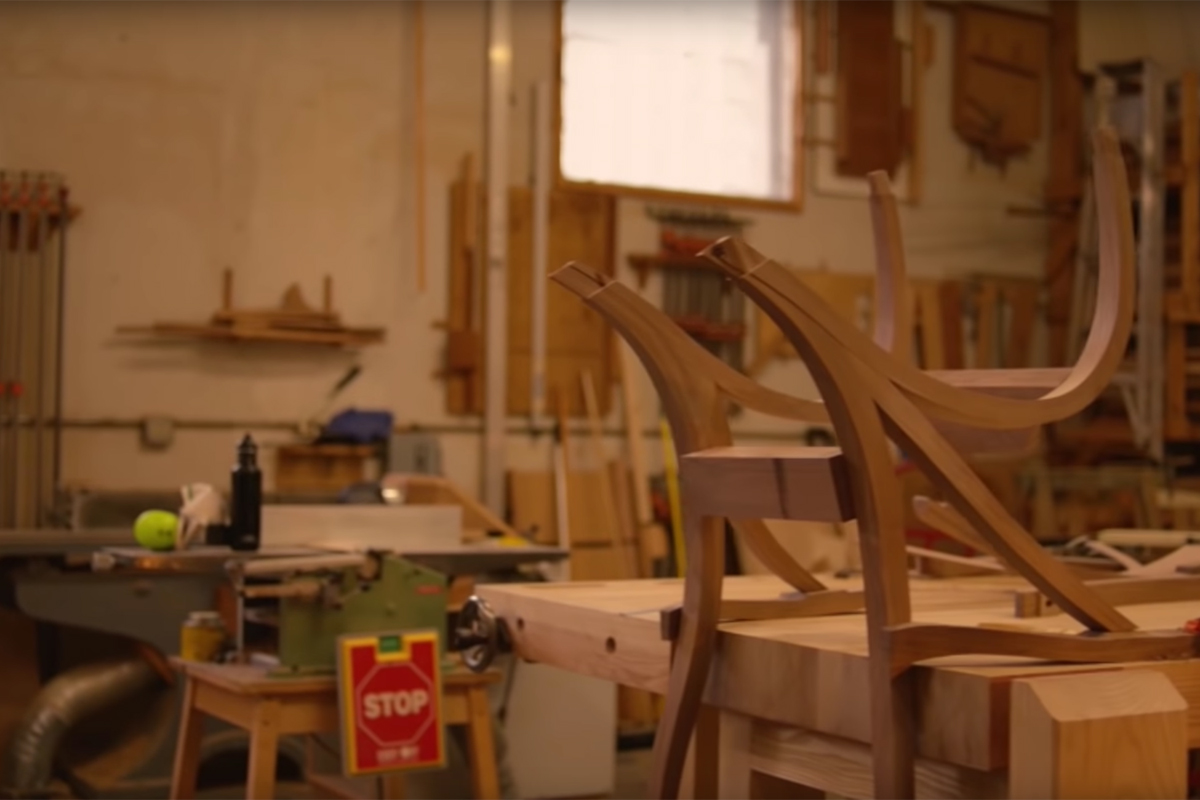

How It's Done:
NEON SIGNS
Grainger Everyday Heroes: Furniture Craftsman
By Grainger Editorial Staff 10/23/19
Jeff Miller has been crafting furniture by hand for 30 years, but he still gains a deep satisfaction from the chair taking shape on his bench. “Chairs have a function,” he said. “They have to be comfortable, they have to hold us up. It’s a real test for a designer. Designers and architects of all sorts have tackled chairs as an interesting challenge.”
“Of course, I didn’t know that when I started out 30 years ago,” he said. “I sort of dived right in—I was designing a table, and the customer asked if I could make some chairs, too. I said, ‘sure!’” He would never have guessed that the project would lead him on a career-defining journey. “After designing 40 different types of chairs, I’ve discovered just how interesting and challenging they can be.”
Three decades’ experience have only deepened his appreciation for the curvature of a comfortable chair. “I’ve designed beds and tables,” he said, “but nothing ultimately offers the same satisfaction as a really cool chair. A table is a fairly simple thing. There are lovely tables, but they’re not like a chair.”
He traced a finger across the arched back of the walnut rocking chair he was working. “Everything is curved. Everything is moving in different directions, and the curvature is very carefully designed to be something that fits the body nicely. There’s support to cradle your back as you’re sitting.”
Jeff turned the rocking chair’s half-finished frame upside down and clamped it to the workbench. He pays great attention to the entire piece, even its hidden faces. “All these bevels are cut by hand,” he said, picking up a thin steel gouge. “They’re way too complex to do any other way.”
He began sculpting the underside of the arm rest, where it joins a support. “I’m going to carve away a little bit, and make that transition more organic,” he said. A thin shaving of wood curled from the tip of his gouge as he ran it along the wood’s surface. “This is walnut, and walnut is just wonderful to work with. Cuts like butter. There’s something about the material itself. The challenges, but also the warmth and texture. Especially when you choose it yourself.”
The geometry of the wood surrounding the joint slowly changed, until the armrest flowed into to the gentle curvature of the support. “This is very rhythmic, repetitive work,” Jeff said, “but it requires a lot of concentration. So you learn to think in a very relaxed, methodical, and precise way. It’s therapeutic.” He laughed. “Sometimes it can be maddening. But I just like doing this. It’s so profoundly satisfying on every level--design, figuring out how to make it, and making it to the best of my ability.”
![]()
The information contained in this article is intended for general information purposes only and is based on information available as of the initial date of publication. No representation is made that the information or references are complete or remain current. This article is not a substitute for review of current applicable government regulations, industry standards, or other standards specific to your business and/or activities and should not be construed as legal advice or opinion. Readers with specific questions should refer to the applicable standards or consult with an attorney.






